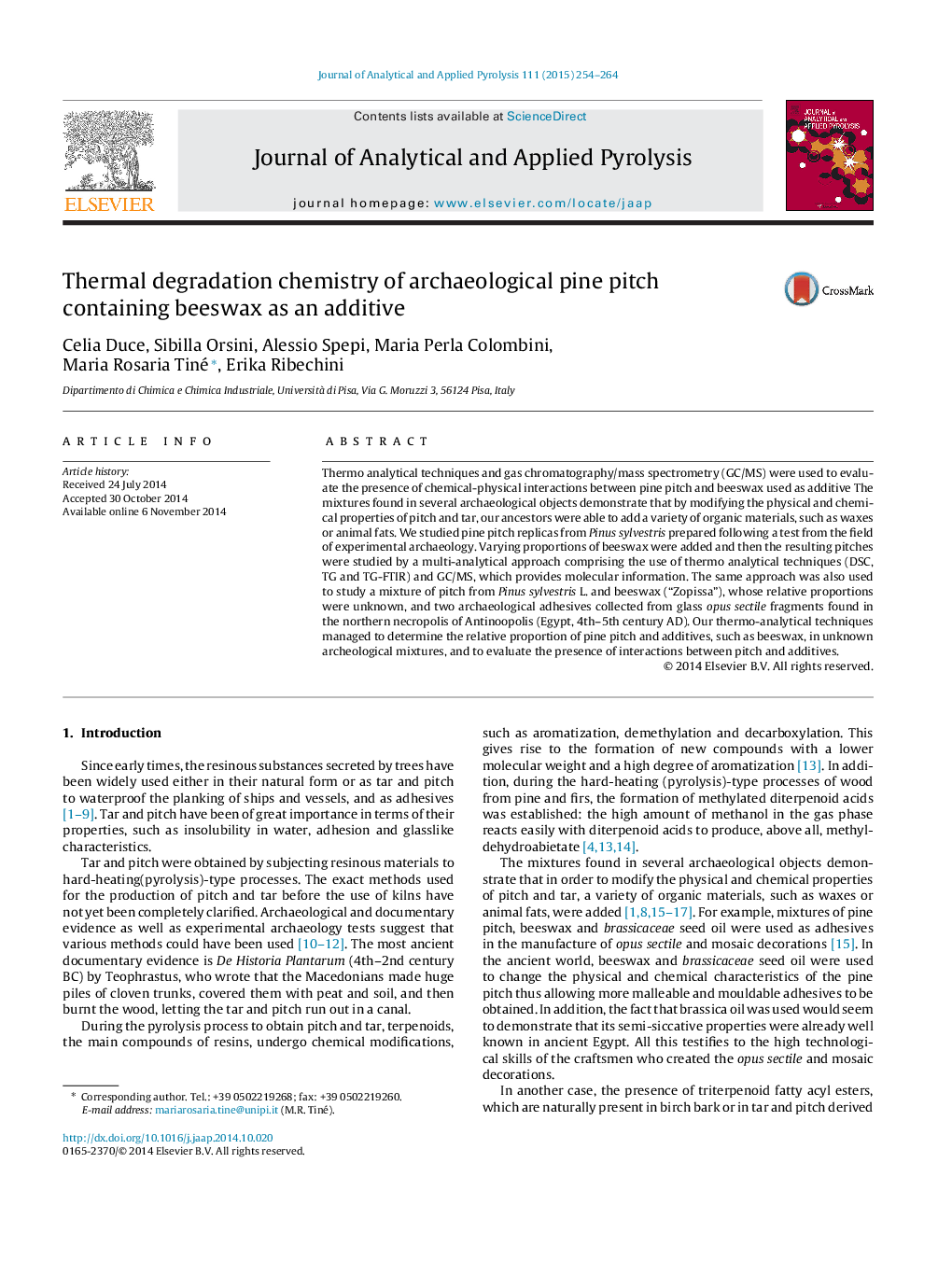| Article ID | Journal | Published Year | Pages | File Type |
|---|---|---|---|---|
| 1196725 | Journal of Analytical and Applied Pyrolysis | 2015 | 11 Pages |
•We evaluated the effect of the beeswax addition on the properties of pine pitch.•A multi-analytical approach (DSC, TG, TG-FTIR and GC/MS) was used to study replicas.•The same approach was used to study unknown mixtures and archaeological adhesives.•DSC and TG are useful to determine the relative proportion of pine pitch/beeswax.•Interactions between pitch and beeswax were highlighted.
Thermo analytical techniques and gas chromatography/mass spectrometry (GC/MS) were used to evaluate the presence of chemical-physical interactions between pine pitch and beeswax used as additive The mixtures found in several archaeological objects demonstrate that by modifying the physical and chemical properties of pitch and tar, our ancestors were able to add a variety of organic materials, such as waxes or animal fats. We studied pine pitch replicas from Pinus sylvestris prepared following a test from the field of experimental archaeology. Varying proportions of beeswax were added and then the resulting pitches were studied by a multi-analytical approach comprising the use of thermo analytical techniques (DSC, TG and TG-FTIR) and GC/MS, which provides molecular information. The same approach was also used to study a mixture of pitch from Pinus sylvestris L. and beeswax (“Zopissa”), whose relative proportions were unknown, and two archaeological adhesives collected from glass opus sectile fragments found in the northern necropolis of Antinoopolis (Egypt, 4th–5th century AD). Our thermo-analytical techniques managed to determine the relative proportion of pine pitch and additives, such as beeswax, in unknown archeological mixtures, and to evaluate the presence of interactions between pitch and additives.
